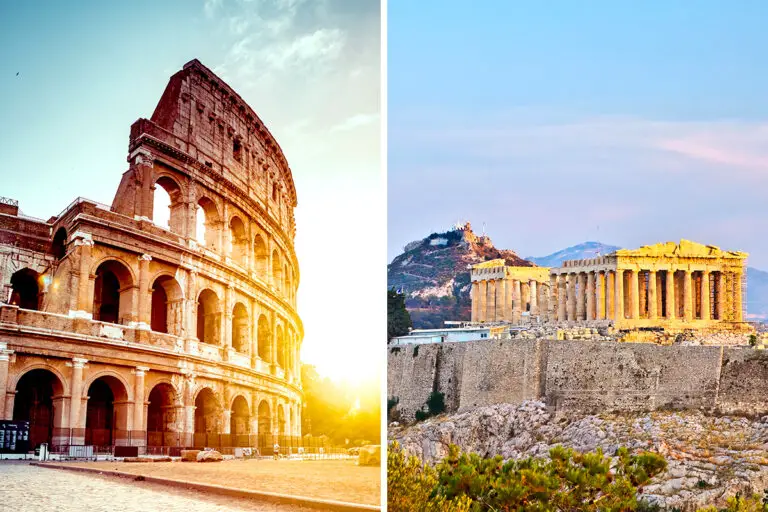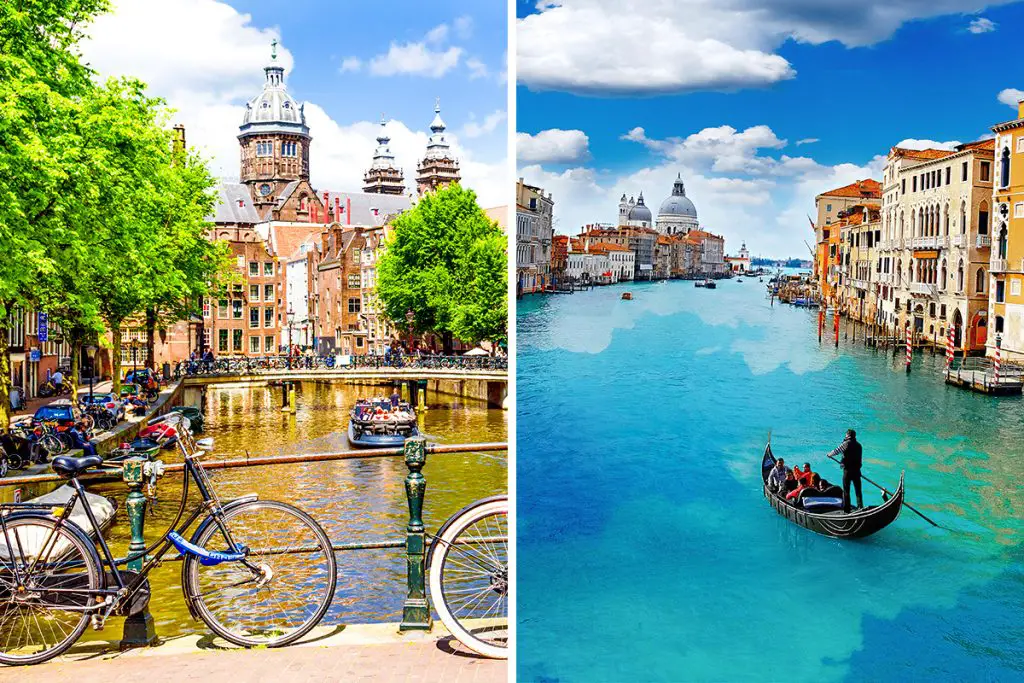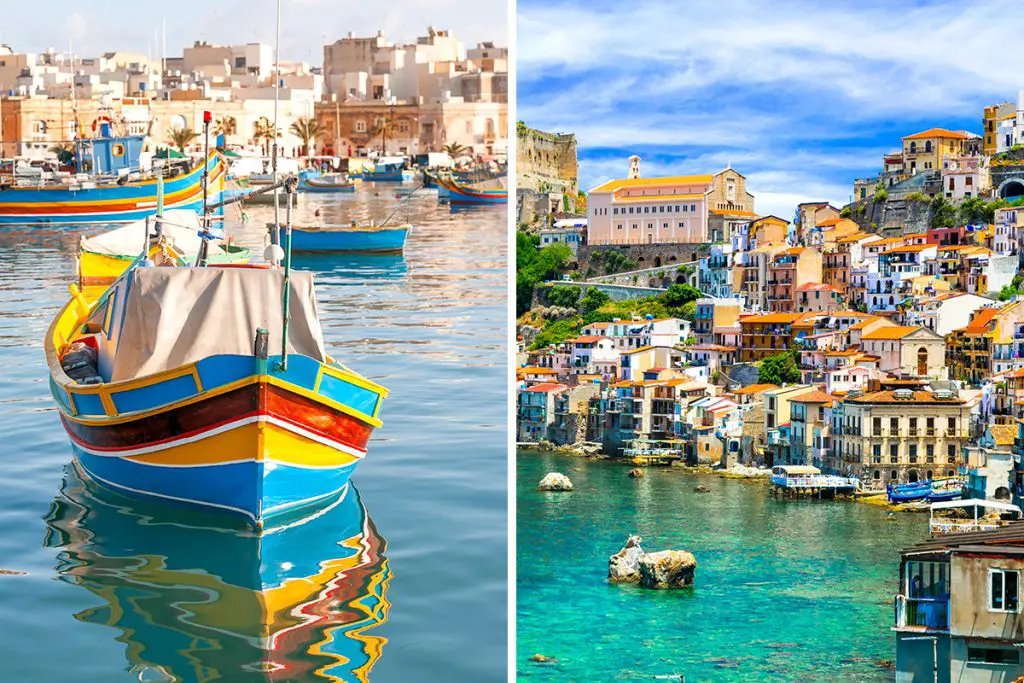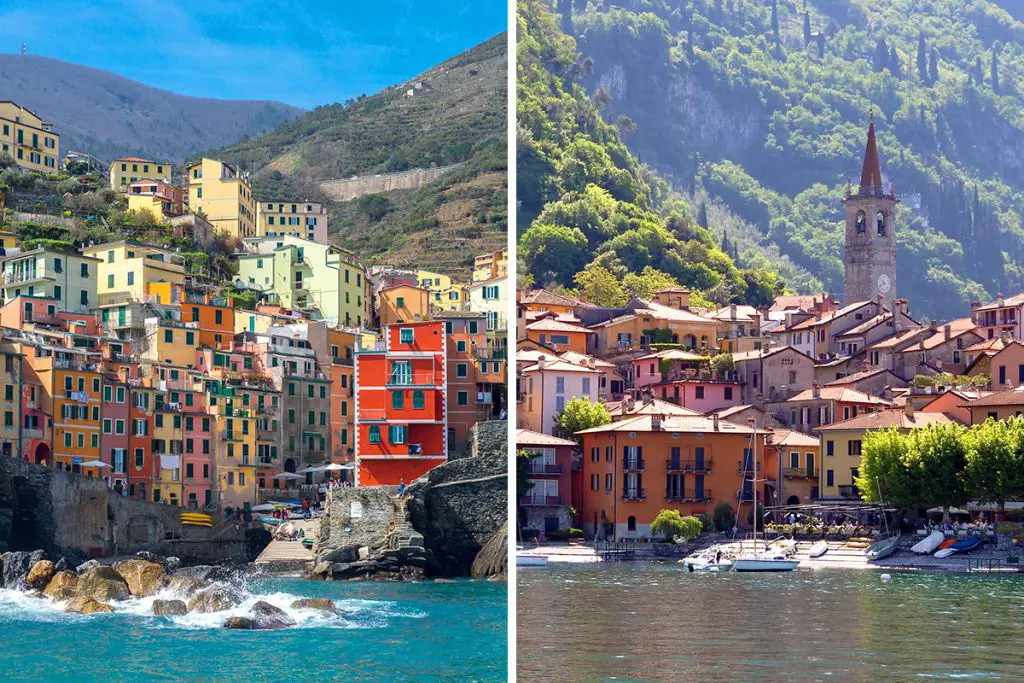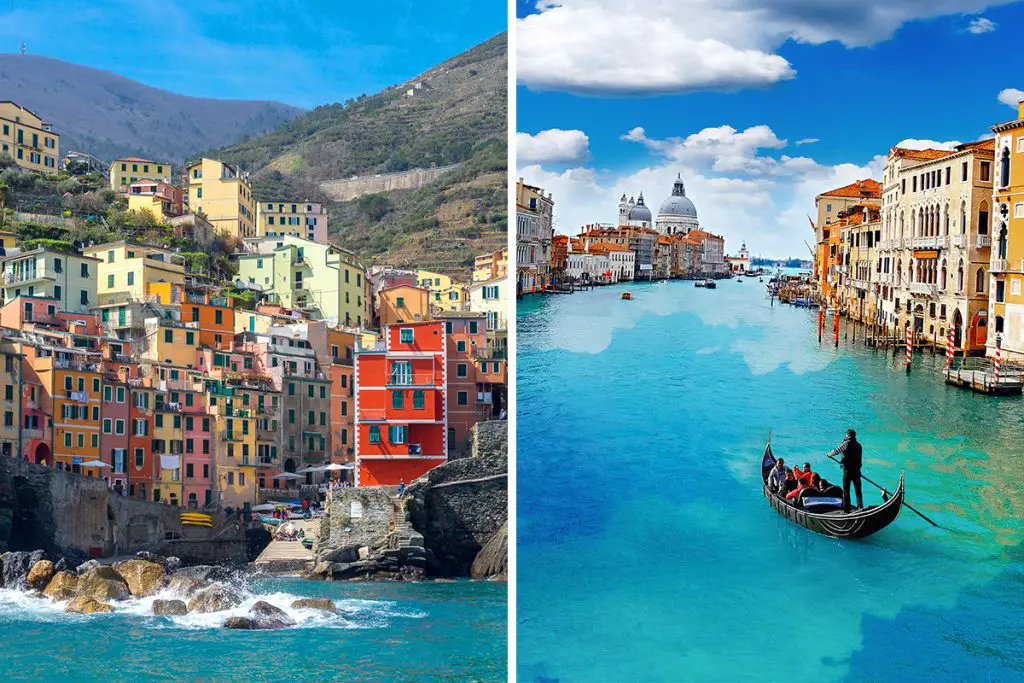For their fascinating and enduring history itself, Rome and Athens have always been bucket list destinations for many. And no matter which you pick, you’ll have tons of historical tours to go on in both cities.
With thousands of years under their belt, there are a lot of layers to peel in Rome and Athens. Still, this is not the only aspect of traveling, and this is where their similarities end.
Rome is a timeless and vivacious city, often compared to a sprawling open-air museum. And while Athens has its fair share of landmarks, it feels more raw and lived-in.
From the food to the shopping experience, both cities have a stark contrast. And in this article, you’ll find out which city is more up your alley.
Rome
Immensely rich in culture, Rome is one of the most visually stunning and fascinating destinations in the world. And while that is its main draw, Rome is well-loved by tourists for its generosity. It has tons of offers in its food, shopping, art, and more.
There’s never a dull day in the Eternal City. And with a trip here, you’ll understand why the Italians say that a lifetime isn’t enough to see Rome.
What Makes Rome Unique?
Iconic Historical Landmarks
In a city filled with antiquity like Rome, seeing historical landmarks is an essential part of your bucket list. The proud city has historical and cultural might, and there’s always a bit of both in every corner.
For a sprawling city, it’s a delight to see how Rome is full of these historical wonders. There’s so much to see in the city, so you’ll never have a dull day figuring out what to do next.
The center is where these iconic sites are, particularly in the Parco Colosseo. It’s where the city’s most prominent archeological sites are, and you can visit all three with one ticket.
It’s home to the Colosseum, a massive amphitheater that once hosted gladiatorial games. You can also find Palatine Hill here, the hill on which Rome was founded. Another site here is the Roman Forum, which was once the center of the ancient civilization’s daily lives.
On the outskirts of the city center is a plethora of other historical gems to explore. From stunning cathedrals, Renaissance buildings, and charming plazas designed by history’s greatest architects.
Among these architectural marvels, the Pantheon is one that you shouldn’t miss. This served as a temple for all Roman gods and was the site of Emperor Hadrian’s court.
After you’ve been to these iconic landmarks, Rome still has a ton of eye candy to offer. Some of the well-loved ones are the Circus Maximus, Castel Sant’Angelo, and Nero’s Domus Aurea.
World-Renowned Art Scene
Rome has always been a lover of the arts. Its art scene has been fueled by Popes and the rich and powerful in the past, brought to life by history’s greatest artists. Some of the big names that have graced the city’s art scene are Michelangelo, Caravaggio, and Bernini.
Today, the Italian capital has prided itself on its stunning art collections. It’s home to masterpieces that have lived throughout various eras. And these paintings come in different styles, ranging from Ancient to Contemporary.
The city itself is like a big, open-air museum, and you don’t even have to spend a ton of money to see its artistic gems. Marvel at mosaics in churches, be in awe of the many ancient Roman sculptures, and see the city’s art transition throughout history.
With Rome’s hundreds of museums, it can take a lifetime to visit each. But here are some worthwhile museums that you shouldn’t miss—
The Capitoline Museums are a staple for art lovers in Rome. It sits behind the Altare alla Patria, on a piazza designed by the great Michelangelo. It primarily houses ancient Roman art, but you’ll find a few medieval and Renaissance pieces here too.
Here’s where you’ll find the 5th-century BC she-wolf, one of the most ancient pieces in the museum. Also here is The Dying Gaul, the bust of Commodus, and the Equestrian Statue of Marco Aurelio.
The Borghese Gallery is home to a private collection of arts, started by Cardinal Scipione Borghese. It’s home to artworks by great Italian artists, such as Bernini, Caravaggio, and Titian.
Some of Bernini’s works here are Apollo and Daphne and The Rape of Persephone. Caravaggio’s Madonna, Child, and Serpent are also top attractions in the museum. Meanwhile, Titian’s Sacred and Profane Love is a crowd favorite too.
A City of Gorgeous Fountains
Rome is also a city of fountains, as much as it is of ruins, churches, and palaces. Fountains are a distinctive trait of its cityscape, ranging from grand and luxurious to small and quirky. It’s one of the city’s greatest displays of its architectural and design prowess over the years.
Rome’s thousands of elaborate water features are a crucial part of the city’s artistic and cultural heritage. Almost every square in the historic center has a fountain. And they’re an unmissable sight on your trip to the Eternal City.
Some of these masterpieces that decorated the city were a work of the greatest artists of all time. Unsurprisingly, Rome’s most famous fountain, the Trevi fountain, is a masterpiece of the great Nicola Salvi.
The Trevi Fountain sits on the Piazza della Fontana di Trevi. It’s a massive and elaborate fountain that’s been the backdrop of Hollywood films.
You can only reach this fountain on foot through meandering alleys. But you’ll have the thundering sound of its water to guide you.
Another famous fountain in Rome is the Fountain of the Four Rivers. It’s a masterpiece by Gian Lorenzo Bernini, featuring the world’s most famous Rivers. These are the Nile, Ganges, Danube, and the Rio de la Plata.
Gian Lorenzo Bernini also sculpted other well-loved fountains in the city. This includes the La Baracaccia, Fontana del Tritone, and Fontana dei Quattro Fiumi.
A Hearty Food Scene
Whether you’re a big foodie or not, Rome is a tasty slice of heaven. Like its historical attractions, the food scene in the city can be overwhelming too. There are over 13000 restaurants in Rome, spoiling you with tons of dining options!
Which restaurant you dine in is not as important as what you want to eat though. And to get a true taste of Rome, you’ll have to set your eyes on the regional specialties.
Sure, you can have pasta around the world and in Italy. But you won’t find pasta anywhere that features the best of Pecorino-Romano like in Rome. This cheese plays a big role in the city’s world-renowned pasta dishes, such as Cacio e Pepe, Carbonara, and Amatriciana.
Other than these, make sure to grab a bite of the local favorites.
Eat like a local and grab some Mritozzo and Cornetto for breakfast. Enjoy a hearty snack with some Suppli, Pizza al Taglio, or Pinsa Romana. Or grab a cup of the quintessential Roman street food, Gelato, as you stroll around the city.
Apart from eating at local restaurants, there are other ways for you to enjoy the city’s cuisine.
You can go on a food tour, where a guide will lead you to the best food spots Rome has to offer. Or you can take a cooking class to learn the Roman cuisine techniques passed on from one generation to another. You can even eat with a local and have them show you around or even cook a meal for you!
Take a chocolate tour during Eurochocolate, a chocolate festival that fills streets with sweet treats. Taste some unique cured meats, such as the well-loved Culatello. Try some Jewish-style cuisine, such as fried artichokes and stracotto at the Jewish Ghetto Quarter.
In Rome, the possibilities for your gastronomic adventure are endless!
Countless Shopping Opportunities
Being the capital city of one of the world’s most fashion-forward countries, shopping in Rome is a real treat for fashionistas. Explore designer boutiques, vintage shops, and artisan stalls. These are the backbone of Rome’s shopping scene that made it a tourist attraction in itself.
Shopping in Rome isn’t limited to the wealthy. Tons of wallet-friendly boutiques and markets are everywhere, making the city a shopping paradise for all. But the key here is to know where to look for them.
If you’re shopping for some luxury international and Italian brands, go to Via dei Condotti. This glamorous street is near the iconic Spanish Steps. You’ll find a street filled with designer brands, such as Prada, Gucci, and Dior.
Via del Corso is also home to famous brand names, making it one of Rome’s most popular shopping streets. This street has a wide array of boutiques, such as Zara, Bershka, and H&M.
For some handmade clothing, Via Vittorio Veneto is the spot to be in. Lining this street are tons of authentic Italian boutiques with a wide selection of items. From stylish clothes to accessories to souvenirs, you can find them all here.
Via del Boschetto is also popular for handmade pieces. In particular, the Rione Monti is home to plenty of artisans and ateliers. Splurge on some jewelry, vintage clothes, and handcrafted accessories here.
If you’re seeking some vintage finds, march your way to Via del Governo Vecchio. It’s one of the best spots in the city for books and leather clothing.
Don’t forget to visit any of the city’s outdoor markets too! They’re a treasure trove of interesting finds on a budget.
The most popular ones are the Porta Portese market and the flea market on Via Sannio. You’ll find almost anything here: from antique housewares to clothes to vintage finds.
Athens
Athens is a vibrant ancient city, mixed with glimpses of modern life that never fail to transport you back in time. With glorious beaches, exciting nightlife, tasty cuisine, and much more, there’s tons to see and do in the capital city. Top that off with its mild climate, Athens is the perfect getaway for any tourist year-round.
What Makes Athens Unique?
Fascinating Ancient Ruins
Athens has been continuously inhabited for thousands of years, and it’s one of the oldest cities in the world. With this long history, the city is full of ancient ruins and historical landmarks. Some of these even date back as far as the 5th century BC!
Their presence is what makes the city of Athens an incredibly special destination. And there are plenty of them to please the culture vulture or the history buff in you.
The city’s most defining site is the Acropolis, one of the world’s most iconic tourist attractions. This site is on a rocky outcrop and was once the center of ancient Greece. The Acropolis hill is home to some of the most important buildings of ancient times.
This includes the Parthenon, a temple dedicated to the goddess Athena. Its soaring columns are best seen during sunset when the amber-hued lights seem to be dancing on the marble.
On the north of the Acropolis is the Erectheion. This temple is decorated with intricate Caryatids—in place of columns, beautiful statues of ladies support the structure.
On the southeast slope of the Acropolis is the Temple of Athena Nike. Though it’s the smallest temple here, it’s no less beautiful than the others.
The Temple of Athena Nike’s built with golden-white Pentelic marble. Because of this, it’s nicknamed the pearl of the Acropolis.
Also in the Acropolis are the lesser-known ruins of Propylaea and Areopagus. Propylaea was a grand monument that served as the entrance to Acropolis. While Areopagus served as the high court of appeal in ancient times for civil and criminal cases.
Picturesque Mediterranean Beaches
Being in the Mediterranean makes Athens such a tempting slice of sandy paradise. Here, you can enjoy the glistening blue waters whenever you want. In Athens, summers are hot and the winters are mild, so anytime is a good time to hit the beach!
Only a few European capital cities can boast easy accessibility to the coast. And Athens is one of the lucky ones, with the south of its center only less than 9 miles (14 kilometers) from the coast. From Syntagma Square, you can either take a bus, taxi, or metro to head to some glorious beaches.
Make your way to some of the most beautiful beaches in the world! Greece is one of the top countries with the most Blue Flag Beaches. And in Athens alone, there are 18 of these.
Vouliagmeni beach is one, and it’s one of the best beaches for some water sports. Every water sport you can think of to have fun in the sun is here, from windsurfing to boat hires.
Glyfada beach is another top option, a favorite among locals and tourists alike. Beach parties are big here, too, as the best beach clubs in the city are around this area!
These beaches may get too crowded and busy for you though. But with plenty of other Blue Flag beaches on the list, you’re bound to find the perfect stretch of sand to your liking!
If you’re seeking a truly secluded beach to unwind on, take a bus and head to the east coast instead. In the Marathon area are some off-the-beaten-track beaches where you can have the waters almost all to yourself!
Mouthwatering Greek Cuisine
One of the highlights of any vacation is tasting the local dishes, as it’s one of the ways to get to the heart of a city. Athens is the best place to get a taste of the exciting gastronomy scene of the country. Here, you can sample dishes from all over Greece, giving you a great sense of what Greek cuisine is all about.
Greek cuisine is simple yet is a burst of splendid taste in your mouth and packs a ton of nutrition. This is all thanks to the freshest seafood in the Mediterranean and locally produced meat and vegetables on your plate! Add some tasty wines on the side and you’ll have a hearty Greek meal at any restaurant that you visit.
The capital city is teeming with restaurants of all kinds for your gastronomic adventure. Athens offers a range of delights from traditional finger food to gourmet and upscale dishes, and everything in the middle.
Start your meals with some fresh and healthy Greek salads. Bite on some of the freshest produce with the tanginess and saltiness of feta cheese to complement this.
Have some of the famous moussaka too, a dish made of eggplant, cheese, and ground lamb. Munch on some succulent souvlaki, fast food with veggies and meat on a skewer. Don’t forget to end your meals on a high and try some loukoumades, which are Greek donuts!
If you’re seeking to taste some traditional dishes, head over to Klimataria. This is one of the city’s oldest taverns, serving authentic eats with a side of festive music and dancing.
Souvlaki Row, near Monastiraki Square, is one of Athen’s most exciting restaurant-filled streets. Have some massive plates here of meat with some fresh and hot pita with wine on the side. There’s constant foot traffic here on the sidewalk, which adds to the great atmosphere.
If you want to experience the upscale dining scene of Athens, the city has seven Michelin-starred restaurants! Though pricier, these spots provide excellent value for your money.
At Hytra, you can get a lavish dining experience of 14 courses with 5 glasses of wine. This worthwhile tasting menu and wine pairings cost about 140 USD per person.
Stunning Art Everywhere
History lovers of all ages and interests will get spoiled in the city of Athens. With over 70 museums in the city, you’ll never have a shortage of options to learn about Greek history and culture!
There’s not enough time to visit every museum that Athens offers. So you’ll want to narrow down your options to the top museums in the city.
At Acropolis hill, you can hit two birds with one stone. After marveling at the beauty of the ruins, you can make your way to the Acropolis Museum.
The museum’s main floor is partially covered in glass. This is to allow visitors to take a good look at the ongoing excavations of the archeological site beneath their feet.
Hundreds of stone and marble busts found on the site are now featured in the museum. This includes the original Caryatids that were used to decorate the Erechtheion.
Another one of Athens’ best museums is the National Archaeological Museum. This is the home of some of the most stunning collections of ancient Greek art.
One of the top attractions here is the gold funeral mask of King Agamemnon of Mycenae, which dates back to the 15th century BC. You can also find the Jockey of Artemision, Antikythera mechanism, and Santorini frescoes here.
Dive deeper into Greek’s great past at the New Acropolis Museum and Cycladic Art museum. These two have excellent displays of Greek’s ancient treasures.
Bustling Nightlife
Being such a party-orientated city, Athens has an electrifying and varied nightlife. Experiencing it is one of the best ways to get a feel of what modern Greece is all about. And this is only one of the ways that Athens prides itself as the heart of Greece.
The fun doesn’t stop here when the sun goes down, and for many, it’s only the beginning. But unlike other European cities, the nightlife in Athens kicks off late, at around 9 or 10 PM. At midnight is when the bars in the city go full-blown party mode, and this continues until 6 AM!
Because of the city’s size, Athens has countless bars to choose from, depending on what you want out of your night out. Entire neighborhoods have their unique style and character. So whether you want to chill at a cozy spot or dance the night away, there’s plenty for the night owl in you in Athens.
The neighborhood of Psriri is one of Athens’ liveliest neighborhoods. Lining its streets are trendy bars, cool late-night taverns, and more.
The area of Gazi is also popular for its vibrant clubs. It’s the choice of the locals, so here’s where you can most likely mingle with them.
If you want a more laid-back night out, Athens is full of quaint rooftop bars! Some of the most famous ones in the city are 360 Cocktail Bar and A for Athens, both of which are in the heart of Athens. These two have a spectacular view of the Acropolis, a perfect backdrop to cap your day off.
Thrilling Market Scene
Shopping is one of the most exciting things you can do in Athens. Sure, you can buy designer clothes or pieces from internationally-known brands here. But the heart of the city’s shopping scene is the bustling local markets that line the streets.
These markets give you an authentic experience of Athenian culture. Stop by one and you’ll find yourself chatting with friendly stall owners, who are happy to tell you about their offers and their origins. This personal touch adds something special to Athens’ shopping scene, so brush up on your bargaining skills!
The city’s markets have a wide range of offers. From refined clothes to secondhand vintage pieces to Greek wines there are a ton of things to bring home! Some popular souvenirs you can get here are handmade pottery, a statue of the Goddess Athena, and olive oil soaps.
Ermou street is the main shopping street in the city. This leads from Syntagma Square to Monastiraki Square. Exploring these areas are half the fun of shopping in Athens, as you may find some specialized shops that offer unique finds!
Monastiraki Flea Market is the most popular market in Athens. It’s home to an assortment of antiques, rare books, and everything else you could think of. You can even score handmade jewelry and paintings by monks here.
There are tons of other well-loved shopping spots in the city. Some of which are the neighborhoods of Gazi, Psyri, and Plaka.
Is Rome or Athens Better to Visit?
With tons to see and do in both cities, Athens and Rome are worthwhile destinations for your trip. But depending on what you want on your vacation, one city edges out the other.
The first thing to consider is if you’re more interested in Roman or Athenian history. Both are the capital cities of some of history’s greatest civilizations, so they host the greatest relics of each.
Other than that, there are other factors to consider on your trip.
If you’re more into architecture, art, and shopping, Rome is a better destination for you. If you’re a beach lover, a party animal, or a souvenir collector, Athens is a much better option.
FAQ
Is Athens in Rome or Greece?
Athens is the capital of Greece, and it’s the largest city in the country. It’s not in Rome, which is the capital city of Italy.
Distance Between Athens and Rome
The straight line distance between Rome and Athens is 652 miles (1049 kilometers). The driving distance is much longer, which is about 791 miles (1273 kilometers).
Is Rome or Athens Older?
Athens is a much older city than Rome, founded in 508 BC. Rome was founded many years after, around 735 BC.
Athens and Rome Government Characteristics
While both were originally city-states, Athens’ and Rome’s governments are vastly different. Athens is the birthplace of democracy, and they practiced it directly. Meanwhile, Rome was a republican state.
In Athens, all male citizens could vote and join in assemblies led by the city-state. This allowed the power to lie in the hands of the people, thus, Athens practiced direct democracy. Its government also had a council that had over 500 people.
Meanwhile, the Roman Republic had an autocracy. This means that the government only had one person, and that was the emperor. Rome also had a senate, but they lacked true political power and didn’t make a ton of decisions in the government.
How to Get From Athens to Rome
You have four transportation options to travel from Athens to Rome. You can either take a plane, train, or bus.
The fastest way to travel between the two countries is via plane. This option only has an average travel time of 2 hours and 5 minutes. But while it’s fast and convenient, it’s also the most expensive choice with an average price of 396 USD.
Buses are an affordable option, with an average ticket cost of 19 USD. There are no direct buses from Athens to Rome though, and you’ll have to transfer buses along the way. Including the transfers, this journey takes about 39 hours and 33 minutes.
Traveling by train is a great in-between option, with a duration of around 37 hours and a ticket price of 52 USD. The route lines on this option need you to make transfers along the way.
Athens to Rome by Ferry
There are no direct ferries between Athens and Rome. So if you’d like to travel by sea, you’re going to use a combination of train, bus, and ferry.
It’s not a popular option for tourists with all the transfers that you have to take at its long travel time. To top it off, the travel costs for this option can stack up easily. You may end up spending more on this option compared to others.
Rome to Athens by Train
There are no direct trains from Rome to Athens. But if you wish to travel by train, you have three different travel routes to choose from when traveling from Rome to Athens.
The first route is Rome (Italy) – Bari (Italy) to Patras (Greece) to Athens (Greece). The second one is Rome (Italy) to Ancona (Italy) to Patras (Greece) to Athens (Greece). The last option is Rome (Italy) to Venice (Italy) to Patras (Greece) to Athens (Greece).
Keep in mind that no matter which route you choose, you’ll have to take a ferry from any city in Italy to Patras in Greece.
From Bari to Patras, the travel time is 16 hours, and the ferry ticket price is 52 USD. If you’re from Ancona heading to Patras, the travel time is 23 hours with a ticket price of 72 USD. And from Venice to Patras, the travel time is 32 hours and the ticket prices start at 93 USD.
Rome to Athens Train Price
Since you have to go through a few cities on this journey, it’s hard to give an estimate of the train ticket prices from Rome to Athens. Ticket prices from one city to another vary depending on the date, time, and booking period. So it’s best to check online for a more accurate price.
How Far Is Athens to Rome by Train?
Traveling from Athens to Rome by train covers a distance of 651 miles (1048 kilometers).
Rome to Athens Train Time
The travel time from Rome to Athens by train can is around 32 to 48 hours. This includes the transfers that you need to take along the way. Given its long duration, most tourists opt to travel via plane.

